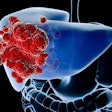The risk of major cardiac adverse events can be reduced substantially with the use of statin drugs, even among those at low risk, according to two studies published in the July 14 issue of the Journal of the American Medical Association (Vol. 314:2).
In one study, Pursnani et al aimed to determine if the 2013 guidelines by the American College of Cardiology and American Heart Association (ACC/ACA) improved the identification of individuals who either had an incident adverse event, developed coronary artery calcium, or developed both within 10 years. They compared these individuals to those covered by the 2004 updated third report of the Expert Panel on Detection, Evaluation, and Treatment (ATP III). In all, 39% of the cohort qualified for statin drugs under AHA/ACC guidelines versus 14% for ATP III guidelines.
In the second JAMA study, Pandya et al found that it may be cost-effective to use statins in individuals with risk levels even lower than 7.5%. The study examined a hypothetical cohort of individuals in the U.S. population ages 45 to 75 years. Changing from a 7.5% or higher threshold to a 3% or higher 10-year event threshold was associated with an additional 161,560 cardiovascular disease events averted due to the additional use of statins.
There is no longer any question about whether to treat individuals with statins for primary prevention, wrote Dr. Philip Greenland and Dr. Michael Lauer, the authors of a JAMA editorial discussing the two studies. Further research should be directed at the millions or billions of individuals who could benefit from the addition of statin treatments, they wrote.



















